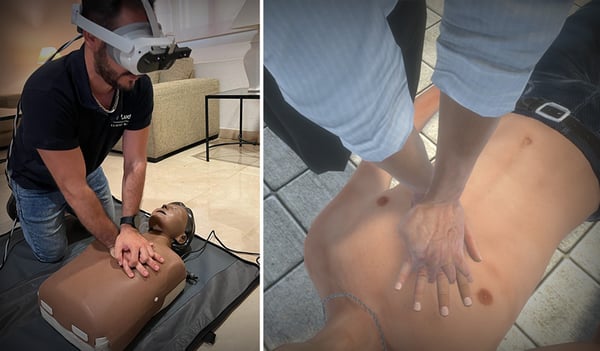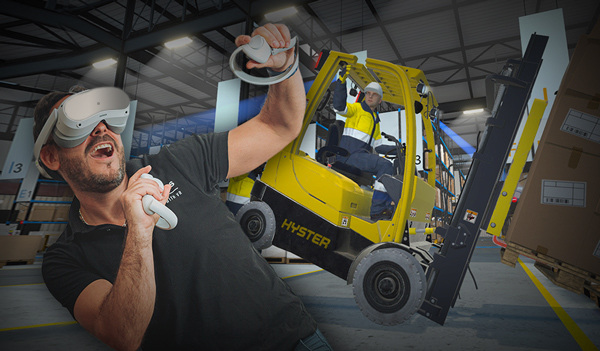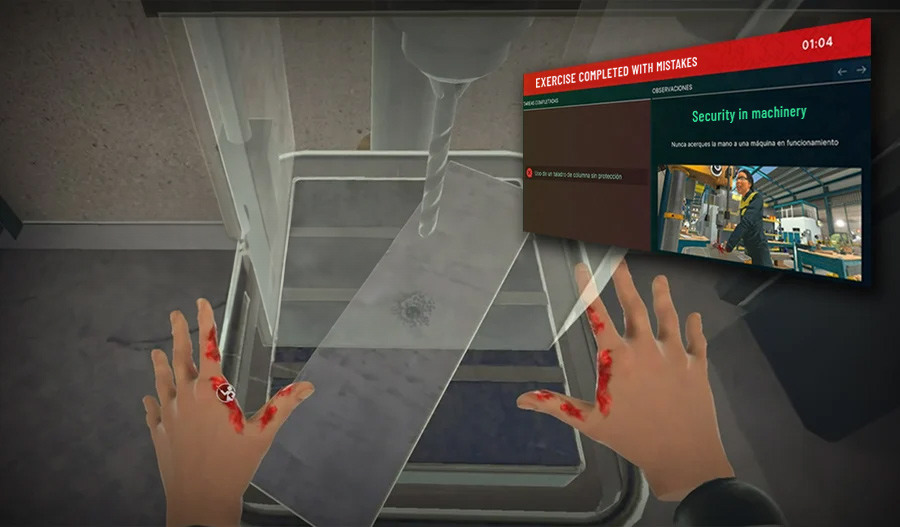Healthcare professionals must know and master emergency procedures such as cardiopulmonary resuscitation (CPR). Additionally, it's important for them to practice these procedures periodically to keep their training in basic life support (BLS) techniques up to date. Technologies like virtual reality (VR) make training CPR in hospitals easier.
The origin of CPR dates back several centuries, although the technique as we know it today emerged in the 1960s. Since then, it has helped save thousands of lives, both in hospital settings and in homes or other locations.
Statistics on deaths from heart attacks or cardiac arrests reflect the importance of training CPR in hospitals and in daily life. Each year, over 20 million people die worldwide from cardiovascular diseases. In Spain alone, 120,572 people died from this cause in 2022, making it the leading cause of death.
As we were mentioning, virtual reality is already being used as a tool to provide CPR training in hospitals, companies, and educational centers. The potential of this technology helps reinforce awareness, realism, and retention of the imparted content.
A study conducted by the Catalan Institute of Health (ICS) and published in the BMC Medical Education journal supports the use of VR. According to the study, virtual reality enhances and increases the knowledge acquired in basic life support (BLS) training sessions. How does this technology benefit CPR training in hospitals?
Virtual reality CPR trainings in hospitals
Virtual reality (VR) reproduces real-life environments or situations in simulations. By wearing goggles, the user immerses themselves in a realistic simulation and experiences firsthand experiences.
The use of this technology provides great realism to CPR training in hospitals. The student experiences a realistic emergency situation, with a victim collapsed on the ground. Additionally, the positioning of the victim's image corresponds to the physical torso used for compressions.

These simulations offer multiple possibilities for providing CPR training in hospitals. In addition to the hospital scenario, the trainer can set up other scenarios, such as an airport or a shopping center, and choose variables at will. For example, whether there is or isn't an AED, whether the victim is breathing agonically or not... This allows training in a wide variety of situations.
Another advantage of VR for training CPR in hospitals or other settings is the collection of data. The technology allows identifying weak points or most common errors. For instance, half of the individuals trained with VR in CPR fail in the depth of their chest compressions.
To address errors like this, Ludus' CPR simulation also provides real-time evaluation of compression rate and depth. This way, the student can check if their compressions meet appropriate parameters while performing them, training their muscle memory.
Possibilities of VR for training CPR in hospitals
Virtual reality offers several paths to provide CPR training in hospitals. Here are some of them:
- Training healthcare professionals in realistic stress contexts, based on real-time feedback and training various variables. CPR courses in hospitals benefit from the realism and variety of scenarios in simulations.
- Conducting easy periodic training sessions or refreshment courses so that healthcare professionals can keep their knowledge up-to-date. These refresher practices can be done in groups, similar to initial training, or individually. In this case, healthcare professionals would take turns one by one in the simulation, based on their availability, without the need to organize a group. This allows for CPR refresher training in hospitals without disrupting the center's activities.
- Providing training to other hospital employees, whether they are healthcare professionals or not. Around 80% of cardiac arrests occur in homes, far from hospital settings. That's why everyone should know and master the CPR maneuver.
Virtual reality for widespread CPR training
Certain barriers prevent widespread CPR training among the entire population. Lack of motivation or realism, little confidence in one's own abilities, fear of harming the victim...
Overcoming these obstacles and achieving a population trained in techniques such as cardiopulmonary resuscitation can save lives. Virtual reality, with its realistic, experiential, and dynamic component, helps to overcome these and other barriers.
---------------------------------------------------------------------------
Are you interested in Virtual Reality as a tool for health and safety training?
Fill out this form to receive specific information about the benefits and features of our VR platform.





















